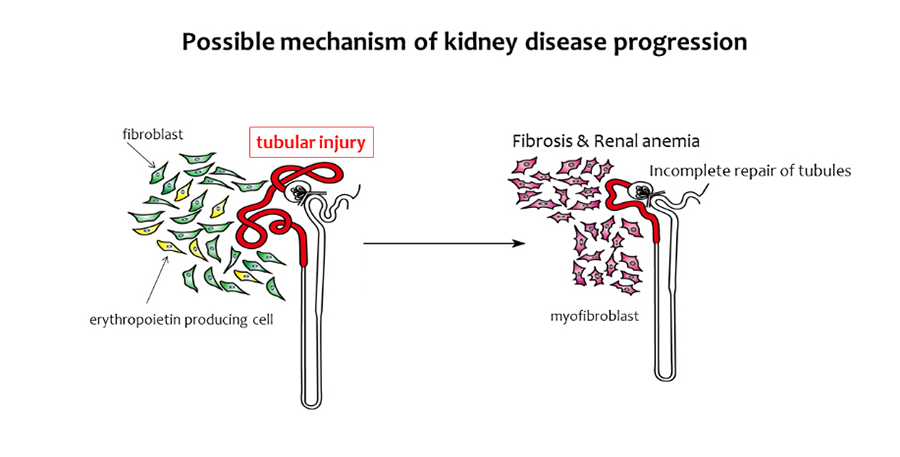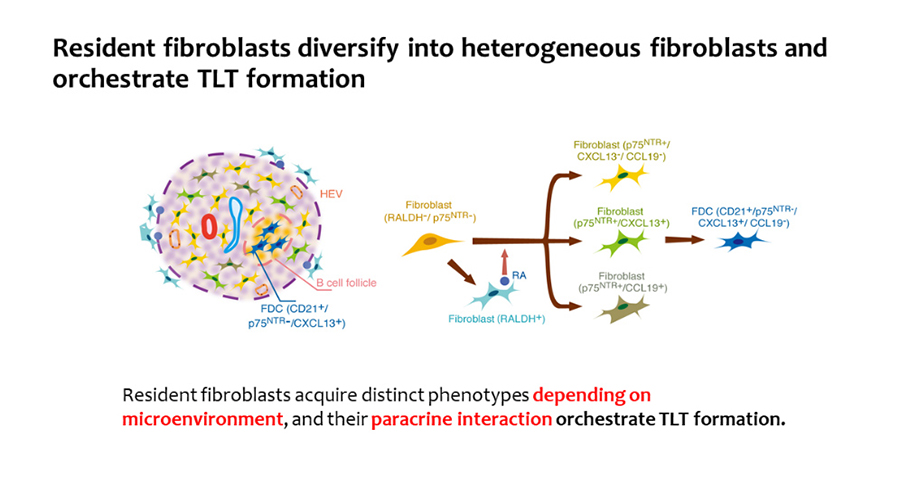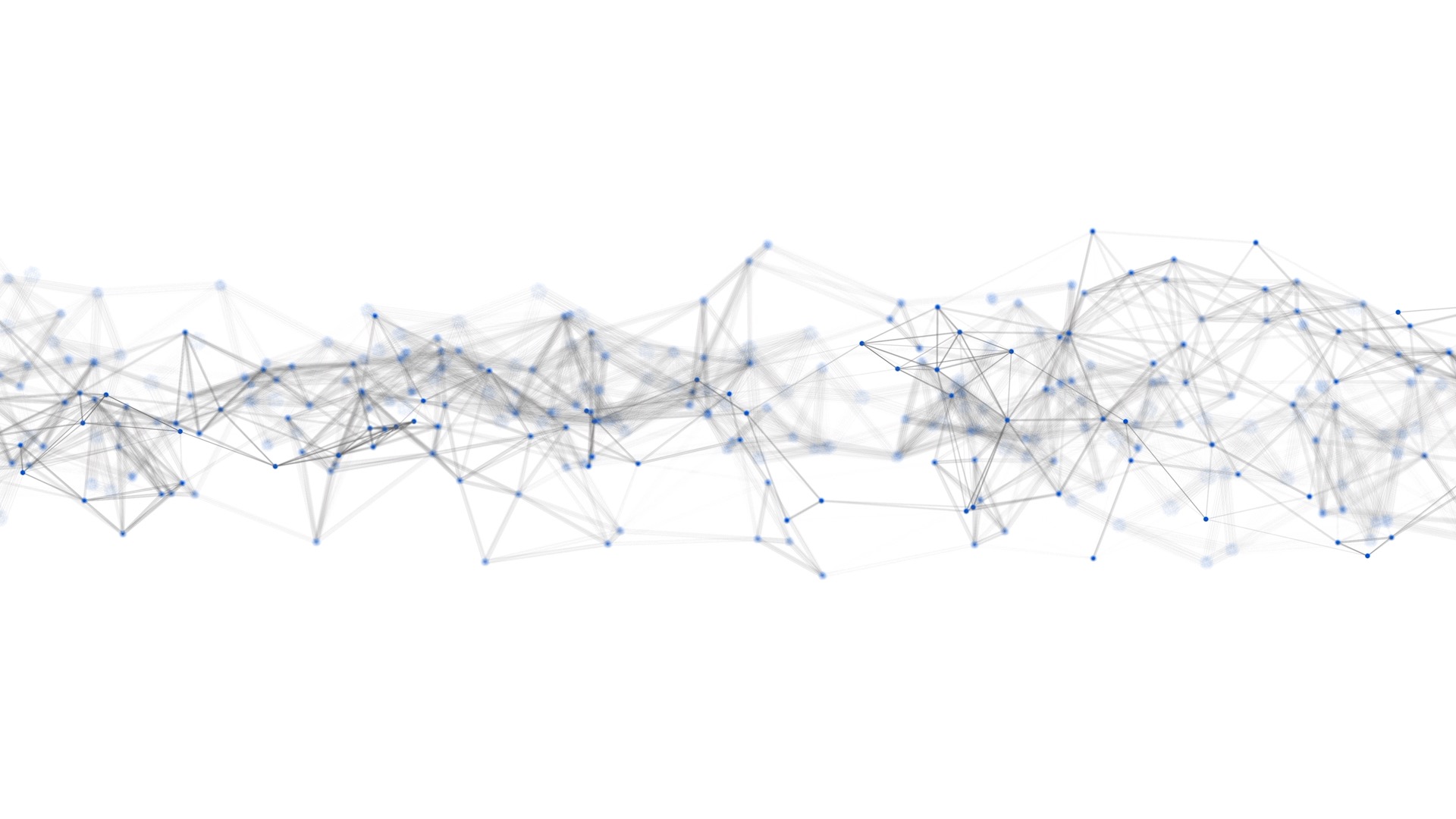
Motoko Yanagita
| Position | Professor |
|---|---|
| Group name | Yanagita Group |
| Research Field | Nephrology |
Research Overview
More than 320,000 patients with renal failure are undergoing hemodialysis in Japan. We are studying the regenerative ability of the kidney, which can be linked to the treatment of kidney disease. We have identified the cell populations responsible for kidney injury and repair, and have revealed the intercellular crosstalk which controls the development and progression of kidney disease. Fibrosis and renal anemia are the hallmarks of advanced kidney diseases. Previously we have found that these two features are caused by the fibroblasts-to-myofibroblasts transdifferentiation in the kidney. In addition, we have shown that the transdifferentiation of fibroblasts is induced by renal tubular damage, and that fibroblasts acquire the ability to produce retinoic acids during the transdifferentiation, which promotes tubular repair. Furthermore, we have shown that renal tubule has self-repairing ability, although the ability is not sufficient if the damage is severe. Elderly people have incomplete renal repair capacity, but the reason of incomplete repair was not clarified. We have shown that tertiary lymphoid tissues (TLTs) are formed in aged injured kidneys, and sustained inflammation due to TLT formation delays kidney regeneration. Interestingly, fibroblasts in the kidney acquire distinct phenotypes which promotes TLT formation in aged kidneys. In this project, we will extend our current understanding of the mechanisms of kidney injury with monkey models and human tissues.


Publications
Shinya Yamamoto, Masamichi Yamamoto, Jin Nakamura, Akiko Mii, Shigenori Yamamoto, Masahiro Takahashi, Keiichi Kaneko, Eiichiro Uchino, Yuki Sato, Shingo Fukuma, Hiromi Imamura, Michiyuki Matsuda, Motoko Yanagita. “Spatiotemporal ATP dynamics during acute kidney injury predicts renal prognosis”. Journal of the American Society of Nephrology 2020 Dec;31(12):2855-2869. doi: 10.1681/ASN.2020050580. Epub 2020 Oct 12.
Yuki Sato, Peter Boor, Shingo Fukuma, Barbara M. Klinkhammer, Hironori Haga, Osamu Ogawa, Jürgen Floege and Motoko Yanagita. “Developmental stages of tertiary lymphoid tissue reflect local injury and inflammation in mouse and human kidneys”. Kidney Int. 2020 Aug;98(2):448-463. doi: 10.1016/j.kint.2020.02.023. Epub 2020 May 28.PMID: 32473779
Eiichiro Uchino , Kanata Suzuki , Noriaki Sato , Ryosuke Kojima , Yoshinori Tamada , Shusuke Hiragi , Hideki Yokoi , Nobuhiro Yugami , Sachiko Minamiguchi, Hironori Haga , Motoko Yanagita, Yasushi Okuno. “Classification of glomerular pathological findings using deep learning and nephrologist-AI collective intelligence approach”. Int J Med Inform. 2020 Jul 11;141:104231. doi: 10.1016/j.ijmedinf.2020.104231. Online ahead of print.PMID: 32682317
Zhengtao Qin, Carl K. Hoh, Emilia S. Olson, Amin Haghighat Jahromi, David J. Hall, Christopher V. Barback, Young-Hyun You, Motoko Yanagita, Kumar Sharma, and David R. Vera.“Molecular imaging of the glomerulus via mesangial cell uptake of radiolabeled tilmanocept”. J Nucl Med 2019 Feb 22 pii:jnumed.118.223727. doi: 10.2967/jnumed. 118.223727.[Epub ahedad of print] PMID:30796169
Jin Nakamura, Yuki Sato, Yuichiro Kitai, Shuichi Wajima, Shinya Yamamoto, Akiko Oguchi,Ryo Yamada, Keiichi Kaneko, Makiko Kondo, Eiichiro Uchino, Junichi Tsuchida, Keita Hirano,Kumar Sharma, Kenji Kohno, Motoko Yanagita. “M0yofibroblasts acquire retinoic acid-producing ability during fibroblast-to-myofibroblast transition following kidney injury”. Kidney Int. 2019 Mar;95(3):526-539. doi: 10.1016/j.kint.2018.10.017. Epub 2019 Jan 17. PMID:30661714


